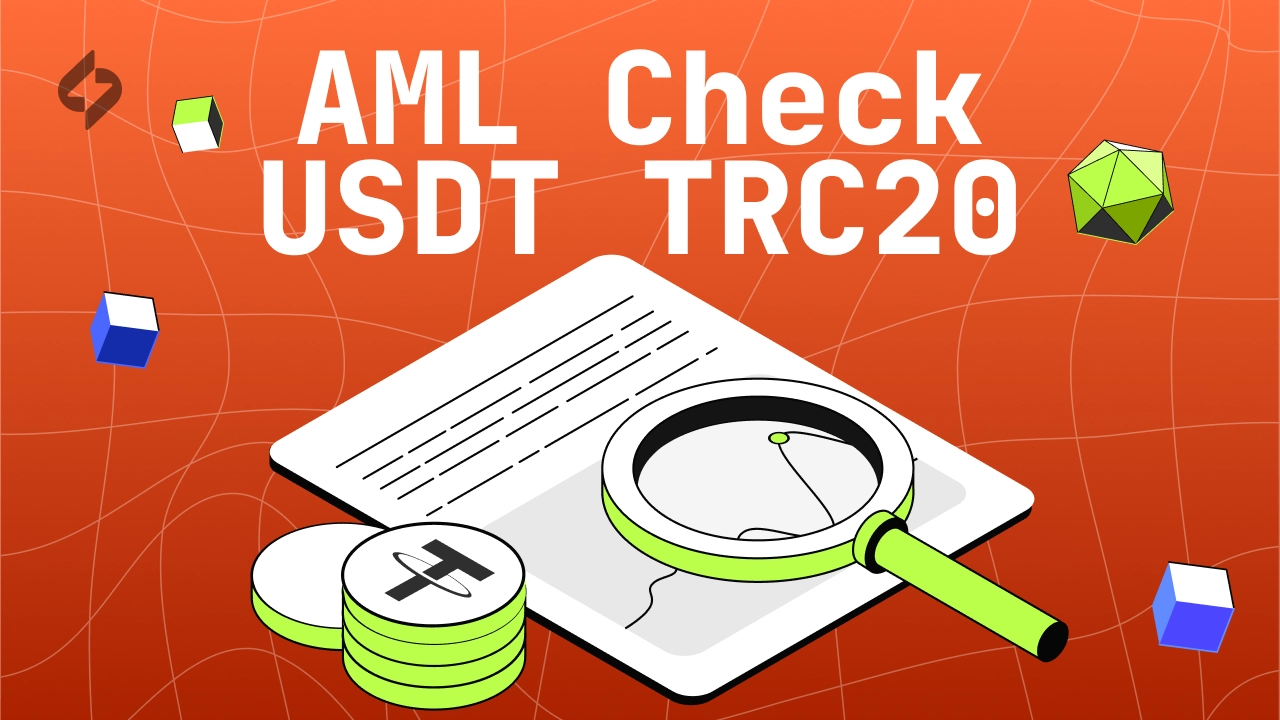Anti-Money Laundering (AML) screening for USDT on TRC-20 is the assessment of transfers and addresses on the TRON network for links to financial crime and sanctions exposure. Exchanges and other virtual asset service providers (VASPs) run these checks on deposits, withdrawals, and transfers. The aim is to reduce the risk that funds touch addresses tied to hacks, fraud, money laundering, or sanctions evasion. This screening logic is an industry standard and is fully applicable to TRC-20.
How AML screening works on TRON and USDT
Using blockchain-analytics tools, a platform can, for a given address or transaction hash (TxID):
- Review the history of incoming and outgoing funds.
- Match the address to labeled entities and incidents (exchanges, P2P venues, coin-mixing services, hacks, darknet markets).
- Consider the share and recency of inflows from high-risk categories.
- Check against sanctions lists.
Based on the result, the system may let a transfer through, route it to manual review, or reject it.
Where and when checks are applied
- On exchanges and other VASPs when funds are deposited or withdrawn.
- In P2P sections (escrowed person-to-person trades) and large “over-the-counter” deals handled by a dealer desk.
- On transfers between platforms that must comply with the Travel Rule—exchange of basic sender/recipient information above jurisdiction-specific thresholds set under FATF guidance.
For everyday users moving small amounts between their own addresses or topping up from clear sources, running personal AML checks is usually unnecessary—providers already perform core risk screening. It becomes relevant if you accept funds from unfamiliar counterparties, plan large exchange deposits, operate as a business, use P2P often, or engage in sizable OTC trades.
What exactly gets checked
- History of the sender’s and recipient’s addresses, including transit hops.
- Share of funds linked to high-risk categories and how recent those links are.
- Interaction types: exchanges, P2P, mixers, other high-risk services.
- Geography and sanctions exposure associated with counterparties’ services.
- Behavioral patterns: splitting into small tranches, repetitive routes, rapid turnover.
Checks can target single transactions (by TxID) or entire wallets, helping avoid receipt of “tainted” funds and disputes with service providers.
What this means for a user
Outcomes depend on the risk assessment and typically fall into three buckets:
- The transfer processes normally.
- Additional information is requested (source of funds, purpose of payment, supporting documents).
- The transfer is declined and account functionality may be temporarily limited. In some cases, if an address is frozen by the USDT issuer, TRC-20 operations on that address stop until it is unfrozen.
How to reduce the chance of delays
- Separate personal and business flows to different TRON addresses.
- Keep proofs of funds’ origin: invoices, contracts, bank statements, transaction IDs (txids).
- Screen counterparties’ addresses before major receipts using open tools and avoid direct links to known problematic clusters.
- Maintain a transparent trail for internal moves between your own addresses—this speeds up responses to potential platform requests.
Conclusion
AML screening of USDT TRC-20 is standard on TRON. Platforms evaluate on-chain history and sanctions risk, and the USDT issuer can freeze addresses when necessary. Users can minimize delays or blocks by keeping clear operational history, retaining basic proofs of funds’ origin, and paying attention to counterparties’ addresses.

